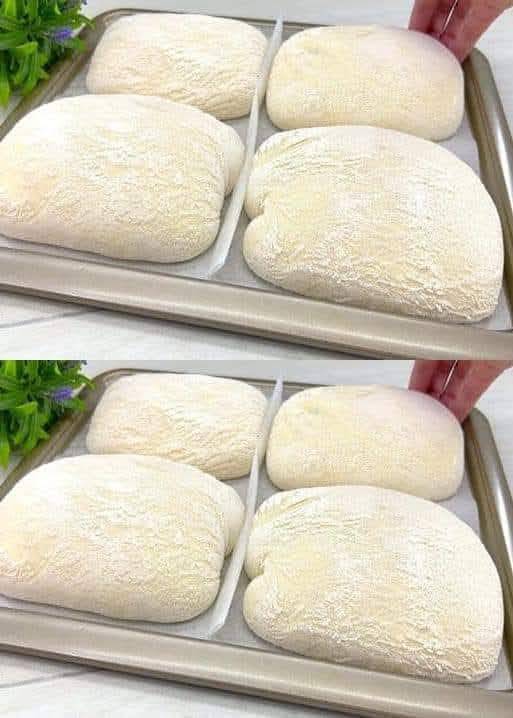After the autolyse, add olive oil to the dough. Using a dough scraper or your hands, gently fold the oil into the dough, strengthening the gluten without deflating the dough.
Cover the bowl and let the dough rise at room temperature for about 3 hours. Perform three sets of stretch and folds, spaced 30 minutes apart, to develop the dough’s elasticity and structure.
After the final stretch and fold, let the dough rest for the remaining rise time until it becomes elastic and bubbly.
Preheat your oven to 475°F (245°C) with a baking stone or inverted baking sheet inside. Place a shallow pan of water on the bottom rack to create steam.
Generously flour your work surface and turn the dough out onto it. Divide the dough into two equal pieces and gently shape them into rough rectangles, being careful not to deflate them.
Transfer the dough to a piece of parchment paper, dust with flour, and cover with a kitchen towel. Let the dough rest for 30-45 minutes.
Using a pizza peel or inverted baking sheet, transfer the parchment paper with the dough onto the preheated baking stone or sheet. Bake for 20-25 minutes until golden brown and hollow-sounding when tapped on the bottom.
For the best flavor, use high-quality flour and allow the biga to ferment for the full 12-16 hours. This extended fermentation develops depth and complexity in the bread.
